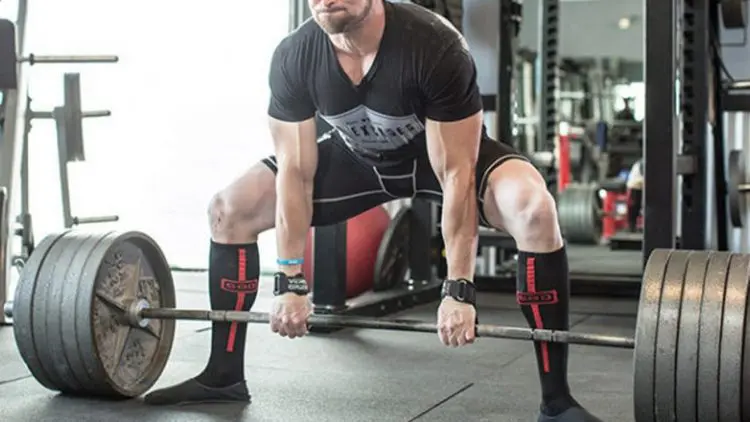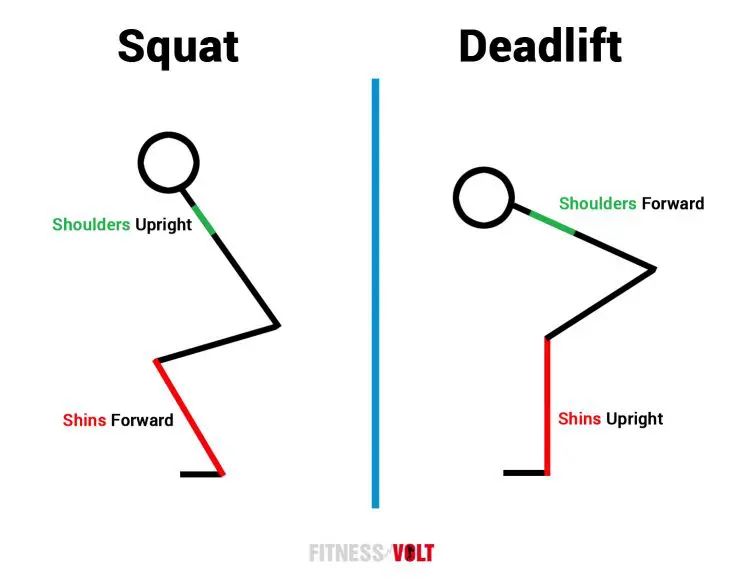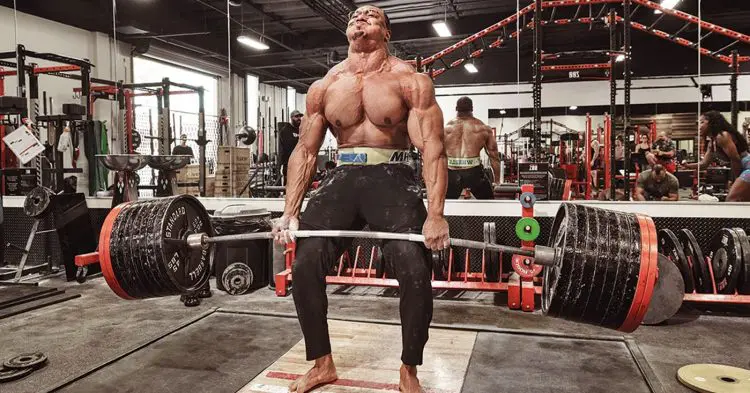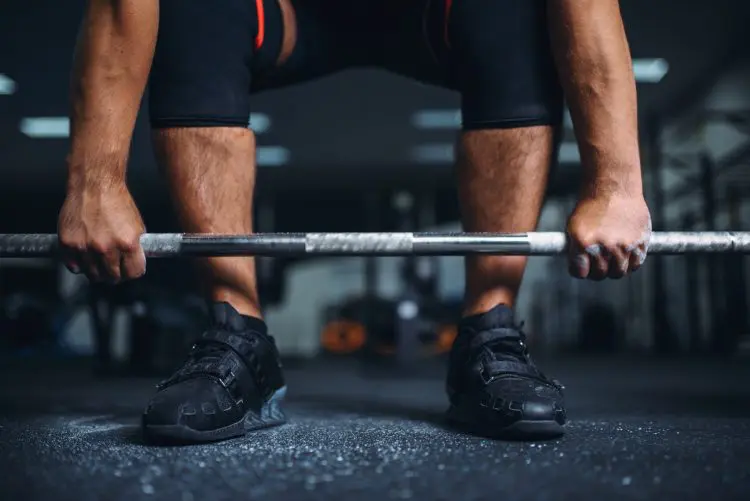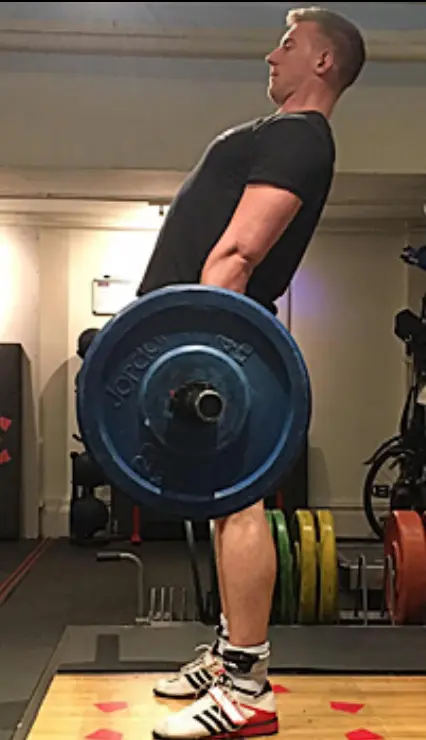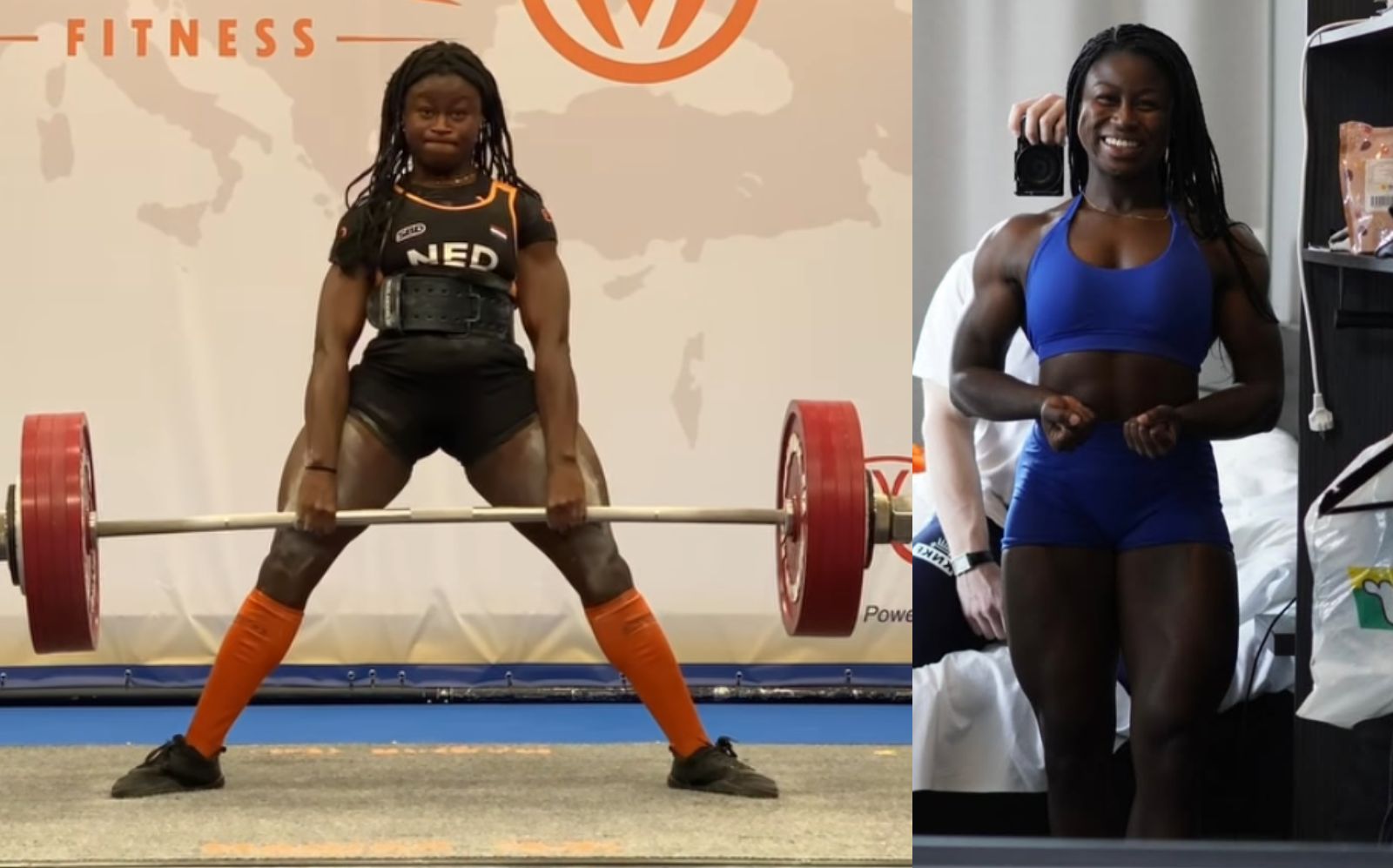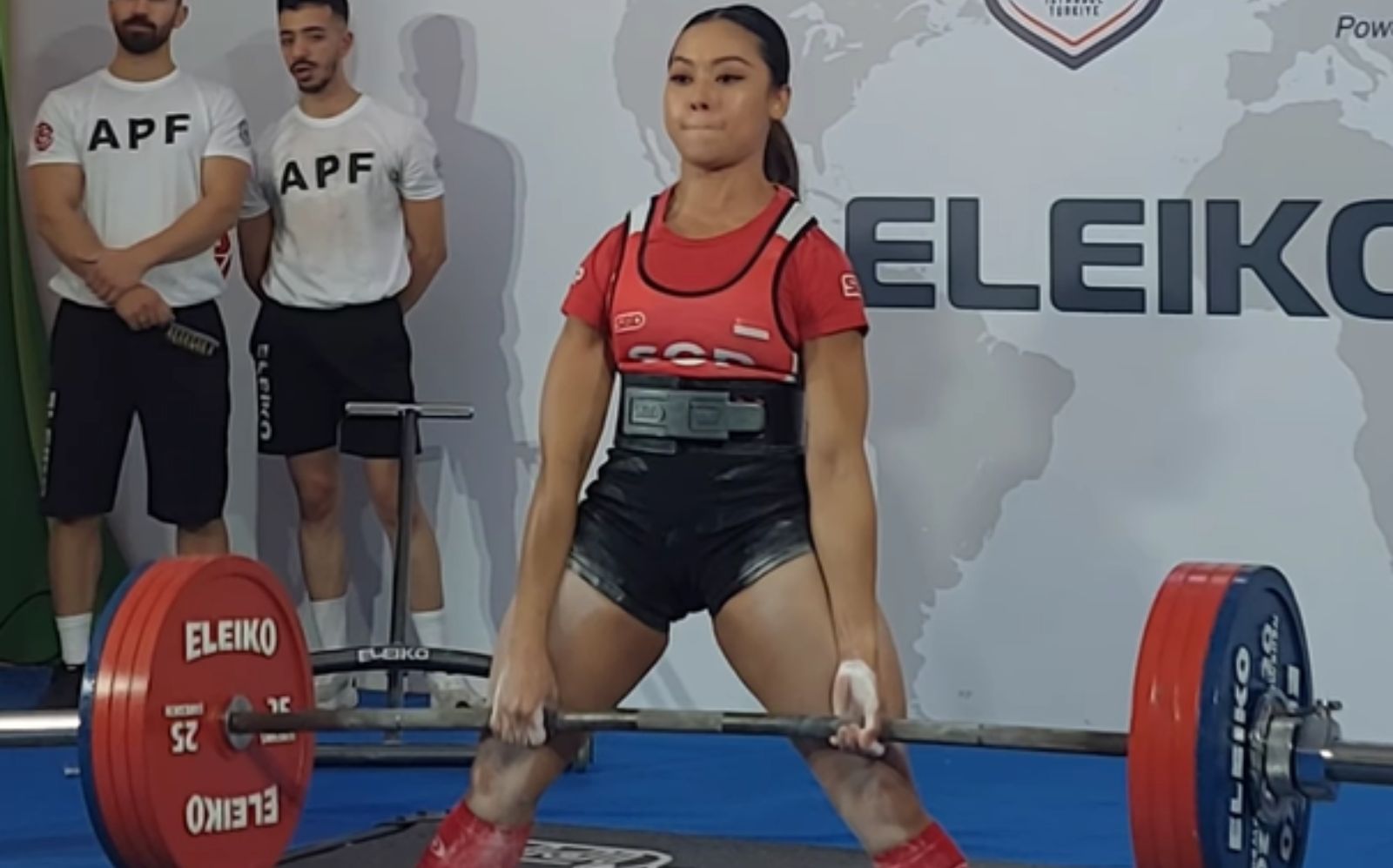The barbell deadlift is arguably one of the most important strength training exercises. In some ways, it’s hard to classify because it’s both a leg AND a back workout. However, wherever you put in your training plan, deadlifts are among the most productive and rewarding exercises around.
- Want to build slabs of muscle all over your body? Deadlifts will help!
- Want to develop total body strength? The deadlift delivers!
- Want to improve athleticism and increase your sports performance? Deadlifts are the way to go!
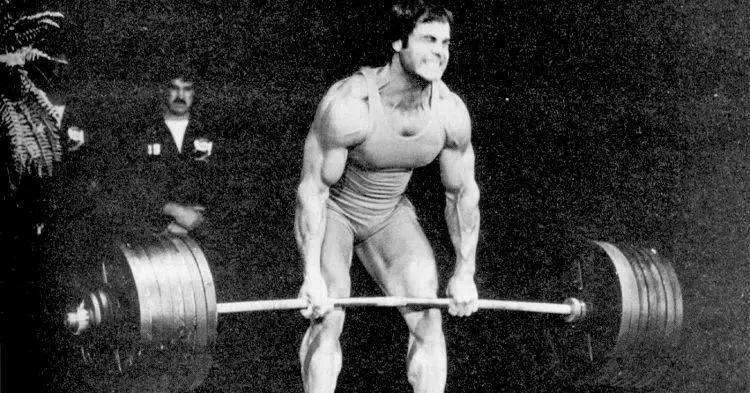
Whatever your training goal is, from fitness to functional strength to fat loss, regular deadlift workouts will get you there faster. And, of course, the deadlift is the third and final lift in powerlifting competitions and a big part of strongman events too.
Deadlifts look quite simple. After all, all you’ve got to do is bend down, grab the bar, and stand up. But, despite appearances to the contrary, the deadlift is quite a technical lift, and it’s all too easy to make a mess of it.
Because of the heavy loads involved, a poorly performed deadlift can result in serious injury, especially to your lower back. Also, an improperly performed deadlift will reduce the amount of weight you can lift or bring your set to a premature end.
Whether you are a budding powerlifter, a bodybuilder, or just a recreational lifter who wants to deadlift better and more safely, use the information in this article to fix the eight most common deadlift faults.
Level Up Your Fitness: Join our 💪 strong community in Fitness Volt Newsletter. Get daily inspiration, expert-backed workouts, nutrition tips, the latest in strength sports, and the support you need to reach your goals. Subscribe for free!
Most Common Deadlift Faults and How to Fix Them
A poorly performed deadlift can make your workouts less productive, lead to injury, and reduce how much weight you can lift. Some faults may even mean you fail to complete your rep. Analyze your deadlift for problems and then uses these fixes to get you back on track. Most of these tips can be applied to both conventional and sumo deadlifts.
1. You can’t break the bar away from the floor
It goes without saying that if you can’t even lift the weight a few inches of the floor, it may be too heavy for you. However, if you have no such issues when you do rack pulls, there may be another reason that your deadlift stalls before you even start!
Failing to break the bar away from the floor can be caused by several things:
- A poor initial set-up
- Weak quadriceps
- Not lifting aggressively
A good deadlift starts with the right set up. Once you grip the bar, you should imagine you are pulling yourself down into the starting position, taking the slack out of the bar as you do so. You should feel tension throughout your body like you are a coiled spring. Lack of tension at the start of a deadlift will rob you of power, resulting in a missed lift.
Deadlifts are usually thought of as a posterior chain exercise. That’s because the weight is in front of your base of support, which means you have to use the muscles on the back of your body more than those on the front.
However, breaking the bar away from the floor requires strong quads. It’s only when the bar is up and moving that your posterior chain really takes over. If you are struggling with the initial lift deadlift liftoff, beefing up your quads with squats will help.
Deficit deadlifts can also increase your strength off the floor, as well as promoting a tighter set-up position.
Finally, deadlifting heavy weights is almost an act of violence. It takes aggression to get a heavy load moving. Remember, deadlifts are so-called because they start from a dead stop, and breaking that inertia requires controlled aggression.
For a lesson in aggressive deadlifting, check out this video of Benedict Magnusson setting a world record of 1015 lbs. Talk about fired up!
2. Your deadlift stalls mid-rep
Once the bar comes off the floor, there is still no guarantee that you’ll be able to complete your rep. Mid-rep stalls can be caused by muscular and technical issues, including:
- Weak glutes and hamstrings
- Letting the bar drift away from your legs
- Trying to squat the weight up
Powerlifters use accessory exercises like Romanian deadlifts, reverse hyperextensions, and glute-hamstring raises to shore up a weak posterior chain. If your deadlift stalls mid-rep, extra posterior chain training will invariably help.
If you let the bar drift away from your legs as it comes up, you increase the distance the weight has to travel and turn your back into a longer lever, essentially making the weight heavier. To avoid this issue, you must keep the bar close to your legs. This starts with your set up, ensuring your feet are under the bar, so it’s close to your shins.
As you stand up, you need to engage your lats to keep the bar close to you. That’s why the deadlift is often seen as a back-builder. Flex your lats to stop the bar from drifting forward, and increase lats strength with some accessory back exercises, such as Pendlay or Kroc rows.
To the uninitiated, squats and deadlifts look very similar, and some people even do deadlifts as if they are squatting with the weight in their hands instead of on their shoulders. While you need strong quads to break the bar away from the floor, as the bar nears your knees, the glutes and hamstrings are much more active.
Squats are mostly knee-dominant, while deadlifts are hip-dominant. They should look and feel very different. If you are hitting a mid-rep wall, you may be trying to squat the weight up. Work on your hip hinge to fix this problem.
3. You can’t lock out
There is nothing more frustrating than pulling a lot of weight, getting close to the top, but then not quite having the strength to lock it out. All that work for nothing! In strongman competitions, you can rest the bar on your thighs and hitch it up incrementally. It looks ugly, but it works. However, in powerlifting, such strategies are against the rules.
Unless you are a strongman, hitching your deadlift offers no real advantages and could result in injury. A clean, smooth lift is best.
There are several ways to increase your lockout strength, including heavy rack pulls, which are deadlifts done from around knee height, and deadlifts with chains or bands. Both of these exercises increase the load as you approach lockout, allowing you to work on this weakness.
4. Your hips rise faster than your shoulders
This is a very common problem that can occur at the start, middle, or end of a rep. Ideally, your hips and shoulders should move at the same speed. If your hips come up faster than your shoulders you are wasting energy, putting more stress on your lower back, and the bar will probably drift away from your legs.
Level Up Your Fitness: Join our 💪 strong community in Fitness Volt Newsletter. Get daily inspiration, expert-backed workouts, nutrition tips, the latest in strength sports, and the support you need to reach your goals. Subscribe for free!
The more out of sync your hips and shoulders are, the more likely you are to miss your rep.
While this CAN be a technical issue, the more likely cause is weak core muscles. Your legs are producing lots of force, but you cannot transfer that force to the barbell. Your midsection loses some of its rigidity, so your hips rise, but the weight doesn’t – or at least it lags behind.
While wearing a weightlifting belt can help bolster core stability, working on your core strength is often the best solution. The usual deadlift assistance exercises of Romanian deadlifts and good mornings will strengthen your posterior core muscles, and rollouts and shovel lifts will build your anterior and lateral core.
5. You round your lower back
A rounded lower back is a weak lower back. Lifting with a rounded back puts a huge strain on the ligaments and intervertebral disks of your lumbar spine. If damaged, these structures take a long time to heal, if they heal at all. A ruptured disk may require surgical repair or might even have to be removed.
A rounded lower back can be the result of poor kinesthetic awareness – you don’t know you are doing it – or weak core and erector spinae muscles. Tight hamstrings may also be part of the problem.
Whatever the cause, treat this fault as a cardinal sin that should be avoided at all costs. Yes, some top deadlifters DO round their backs, but they are in the minority. For the rest of us, the risks far outweigh any benefits.
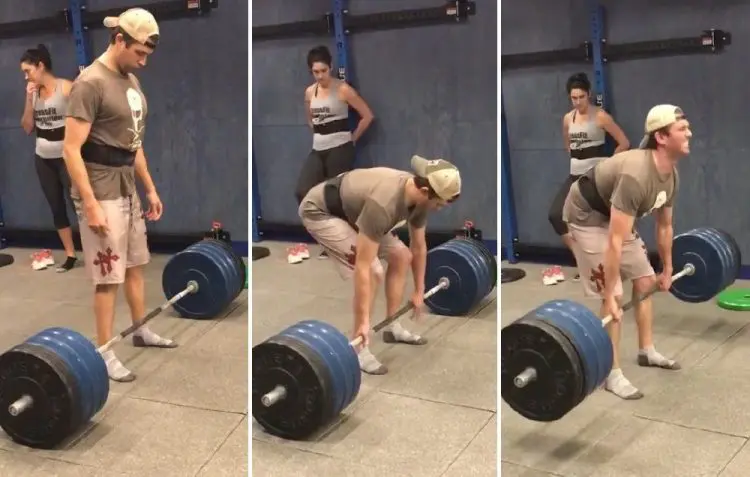
6. You lose your balance and end up on your toes
Heavy deadlifts can pull you forward onto your toes. Once that happens, the chances of completing your rep successfully fall dramatically. When your weight is on your toes, you won’t be able to maximally recruit your posterior chain, the bar will probably start to drift away from your legs, your hips may start to rise faster than your shoulders, and your lower back is more likely to round.
Setting up properly, driving your heels into the floor, keeping your hips back, and engaging your lats will all help alleviate this problem, but what you wear on your feet is also important.
If you wear shoes with raised heels, you are already on your way to falling forward when you deadlift, even if you’re wearing weightlifting shoes. A raised heel puts your weight on your toes when it should be on the back of your foot.
Avoid potential problems, by wearing flat shoes, like Chuck Taylors, minimalist running shoes, or lifting in your socks or barefoot. Powerlifters often wear deadlifting slippers to help them keep their heels down.
As an added benefit, wearing thin-soled, flat shoes reduce the distance the bar has to travel. This might only account for half an inch or so, but every little counts when you are doing a bar-bending deadlift!
7. Leaning back too far at the top
It’s not just rounding your lower back that can cause injury; hyperextending your back and leaning back at the top of each rep is also dangerous.
There are no advantages to leaning back when you complete a deadlift. However, doing so places undue pressure on your intervertebral disks and could even cause a rupture. You’re basically pinching the disk between your lumbar vertebrae as you simultaneously compress your spine.
In fact, there is so much pressure on your disks during heavy deadlifts that you are slightly shorter after your workout! Don’t worry; you’ll regain any lost height in an hour or so.
If you are in the habit of leaning back at the top of your deadlifts, it’s time to stop before you hurt yourself. Get a buddy to watch you and tell you when you are standing upright as it may be difficult to judge the right position by feel alone. Also, there is no need to shrug your shoulders or bend your arms at the end of each rep. These faults are also causes of injury during deadlifts.
8. Losing your grip on the bar
Deadlifts are as much a test of grip strength as they are of your posterior chain. A weak grip could significantly reduce the amount of weight you can lift or the number of reps you can complete.
While you could use lifting straps to get around your weak grip, this merely addresses the symptom of the problem and not the cause. Also, if you are a powerlifter, lifting straps are not allowed in competition, though they are usually permitted in strongman events.
Using a mixed grip will help, where one hand is supinated, and one hand is pronated. This stops the bar from rolling out of your fingers. Most top deadlifters use a mixed grip because it’s invariably stronger than a double overhand grip.
You could use a hook grip, where the thumb is placed and held beneath the first two fingers. This increases friction on the bar, leading to a more secure hold. However, hook grip deadlifts can be excruciatingly painful.
Lifting chalk is also very useful for enhancing your grip. If your hands are dry, they’re less likely to slip.
However, if your grip is still letting you down, some dedicated hand and forearm training will undoubtedly help. Heavy farmer’s walks are a good option, and you’ll find plenty of other effective grip builders in this informative article.
Wrapping Up
Deadlifts have the potential to unlock all your strength and muscle building dreams, but if you don’t do them correctly, they can quickly become a nightmare. For such a seemingly simple exercise, there is a lot that can go wrong. Most deadlift faults are made worse because of the heavy loads involved; big weights have a way of magnifying any technique faults and weak muscles.
The good news is that most deadlift faults are easily remedied, but you need to spot them to fix them. Video your next deadlift workout or ask an experienced lifter or coach to watch you. Analyze your performance and then get to work fixing your faults.
This may mean you have to deadlift with a little less weight for a while as you work on your weaknesses, but you should find that you quickly pass your previous best performances as you eliminate the weak links that were holding you back.

